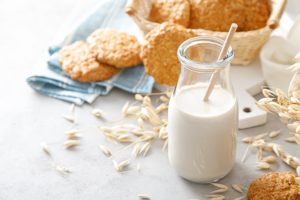Indian gravies are a testament to the country’s rich culinary history that’s influenced by several empires and perfected over time, reflecting its diverse influences and regional flavours. Forming the base of many of the country’s most famous dishes, these gravies serve as foundational culinary solutions, renowned for infusing flavour, colour, and richness into dishes. Culturally, Indian gravies are culinary gems, integral to how people connect with their food. Delve into their fascinating history and varieties, besides understanding the unique role they play in creating the unforgettable taste experiences we associate with Indian food.
History of Gravy in India
Ask people about the origins of Indian gravies, and you’ll likely find enough answers to fill a textbook. You’ll hear about traditions that flourished untouched, experimentations in yesteryear kitchens, and even chefs from decades ago accidentally stumbling upon recipes that we enjoy today. Despite this, it’s difficult to pinpoint the exact genesis of the concept of the gravy—the country’s cuisine is made up of several components, each as complex as the other. Rich in Indian micro-cuisine, each region’s distinct spices and ingredients contribute unique layers of flavor and texture, showcasing the diversity within a single culinary tradition. Given the intricacies and wide-ranging socio-cultural factors, a comprehensive history of the land’s culinary evolution remains underexplored.
What is certain is that India’s various kingdoms and occupiers—from the Mughals to the Persians and the British—left an impression on the nation’s culinary identity. Starting with pulses and grains entering through northwestern India and the use of spices, followed by the reliance on milk, dairy products, rice, cereals, and meat, we move on to the introduction of Afghan flatbreads and the eventual discovery of chillies and tomatoes during the latter half of the Mughal rule. European colonisers had their say on local cuisines by bringing secrets from back home and opening trade routes that introduced various crops to the country. The foundation of various gravies can be charted to some points in this timeline. For instance, thick gravies can be associated with the Mughal dynasty. And modern Goan cuisine is variations or adaptations of earlier Portuguese dishes.
As the collective effect of these cuisines took shape and rice and roti became staples, gravies were relied upon for their simplicity and versatility as pairings. Regional variations of gravies have been occurring for ages—and still do—as cooking methods and recipes evolve. Today, the gravy is viewed as a jewel in Indian kitchens—it holds special significance for people thanks to its prominence and enduring legacy.
Regional Variety of Gravy in Indian Cuisine
The diversity of Indian gravies has a lot to do with the culture of cooking in different regions and states. Shaped by local nuances and social norms, gravies can be indistinguishable totally from one another and also vary within the same similar groups. Some recipes call for several spices to be sautéed in oil, while others take a less-spicy route. From the incorporation of masala and the choice of base ingredients, there are distinctions in preparation styles everywhere. Broadly speaking, the varieties of Indian gravies can be broken down as follows:
North Indian Gravies

These gravies are usually rich, creamy, and sweeter than those found elsewhere, while often slow cooked. Tomato and butter-based gravies like paneer butter masala and butter chicken are fragrant and full-flavoured—spices such as cumin, coriander, garam masala, and cardamom typically add layers of warmth and depth to the dishes. Mughlai cuisine has notably left a mark on different gravies, with aromatic ingredients like whole spices and saffron ground into dishes and topped off with dry fruits and nuts. Other notable gravy-based preparations from this region are dal makhani, varieties of kormas, rogan josh, and malai kofta.
South Indian Gravies

South Indian gravies are tangier than most and pack in numerous flavours. Standard gravies and gravy-based items like sambhar, Chettinad masala, and coconut-based stews accompany most meals and pair well with different foods. These dishes are often lighter in texture compared to their northern counterparts. Various spices such as ginger, cumin, mustard seeds, and black pepper give these gravies their savoury flavour, while the mild sweetness of coconut oil acts as a counterpoint. Also, curry leaves are a focal point in these dishes.
East Indian Gravies

East Indian cuisine, particularly Bengali food, is widely known for showcasing seafood and rustic coastal specialities. Unsurprisingly, gravies such as chingri malaikari and maccha tarkari are celebrated along the northern part of the Coromandel Coast and beyond. Piquant, rich, and sometimes quietly sweet at once, most gravies from the East owe their flavours to the generous use of poppy and mustard seeds.
West Indian Gravies

Goan and Maharashtrian cuisine comprises vibrant, flavourful gravies. While the former is known for fiery, spicy gravies with Portuguese roots, Maharashtra’s regional diversity is responsible for several types of gravies—each nuanced in preparation and taste. Coconut stars in many gravies from the two states, with cloves, cinnamon, vinegar, and chilli equally important. Some delicious gravy-based dishes are xacuti and the renowned Kolhapuri curry.
Types of Gravy

While not all gravies are the same, they can be sorted into five common types. These can then be used in various ways to arrive at different dishes and curries. The standard recipes are as follows:
White gravy
The flavour profile of this gravy is mild, creamy, and often sweet. It is frequently used in Mughlai dishes and has a thick, rich consistency. It is typically made with cashew nut paste, ghee, onion paste, ginger-garlic paste, curd, and green chillies. Popular dishes like malai kofta and some styles of kormas owe their existence to this beloved gravy.
Red gravy
Spicy, tangy, and slightly sweet describe this gravy from the north. With butter at its heart, red gravy—like white gravy—is also thickened with cashews, besides tomato puree. It is commonly prepared with ginger-garlic paste, curd, cream, garam masala, powdered fenugreek leaves, red chilli powder, green chillies, and coriander powder. Red gravy goes well with chicken and paneer to create dishes like butter chicken and paneer butter masala. The gravy is also added to brown gravy to prepare very aromatic curries.
Brown gravy
Onions and tomatoes are the building blocks of this widely used gravy. It can taste rich and sharp, with a lumpy texture that can be pureed if desired. Onions and tomatoes aside, brown gravy usually consists of ginger-garlic paste, red chilli powder, green chillies, curd, cumin powder, and coriander powder. The gravy anchors several North Indian curries and dishes. Examples include mutton rogan josh, paneer lababdar, and chicken rara.
Green gravy
Depending on where it’s made, this gravy gets its characteristic colour from spinach (or other green alternatives), which is merely added in paste form to brown gravy and cooked. The flavour profile revolves around earthy tones, bordering on slightly bitter. This gravy can be found in dishes everywhere, from palak paneer to hariyali chicken.
Yellow gravy
This is prepared by adding turmeric and saffron to white gravy. It has an earthy flavour atop creamy tones. It can be used to make kormas, chicken curries, matar paneer, and more. Unlike spicier gravies, yellow gravy tends to be gentler on the palate, focusing on aromatic spices like cumin and coriander.
Regardless of the type of gravy, spice blends are crucial to developing their flavour profiles. Using the proper selection and combination of spices can shape a gravy’s core and give it robustness for other flavours to bounce off. And as with all things food, ingredient sourcing is essential to keeping gravies as authentic as possible. Using fresh, high-quality spices and ingredients can significantly enhance the taste and aroma of gravies.
Different Uses of Gravy
If an Indian kitchen were likened to the Louvre, the gravies inside would be the Mona Lisa. They are indeed the showpiece of most household meals. As the foundation of Indian cooking, they serve different applications and come in handy when a quick fix is required. Their most vital use is acting as the base for countless curries, exchanging flavours with meats, vegetables, and lentils to form an array of flavour profiles. These curries complement almost all primary dishes, from rotis to rice. And gravies aren’t restricted to fully-functioning kitchens: They’re the basis of street food such as pav bhaji. Gravies can also be used as they are—fill samosas and parathas with them or serve them with various breads/rice. And don’t forget! Gravies can stand in as dipping sauces for snacks like pakoras and bhaji.
Conclusion
Indian gravies are very much the soul of the country’s several cuisines. Steeped in centuries of tradition, they genuinely represent gastronomic experimentation and have been a culinary baton passed from generation to generation. Today, gravies are a testament to India’s rich and diverse culinary heritage, evoking cultural resonance and nostalgia in equal measure. Gravies across the country are particular to specific regions, changing form and taste from state to state. (Meaning sambhars in some places are sweeter than others, which is a topic best left alone.) Furthermore, gravies are versatile and come in different types, each with its own flavour profile, ingredients, and usage. Being an indelible part of our daily cuisines, we should prepare gravies carefully and use the right products, whether fresh produce or ready-to-use items.
FAQs
The ingredients in Indian gravies can vary depending on the region and variation of the dish. Common base ingredients include tomatoes, onions, curd, and ginger-garlic paste. Garam masala, coriander, cumin, and chilli powder are common spice elements. Cream/milk is often used to prepare white gravies and give them a smooth texture, while ground cashews are used to thicken gravies and add richness.
North Indian gravies are often characterised by their rich, creamy consistency. They are also usually sweeter, whereas their southern counterparts tend to be tangy, slightly spicy, and more diluted in texture. Slow cooking is the norm for several North Indian gravies, which mostly abandon a southern staple—the coconut.
It is possible to choose alternatives while preparing gravies. You can substitute cream with low-fat versions or use yoghurt with an onion base. Sunflower/pumpkin seeds can be used instead of cashews and almonds. Experiment with healthy ingredients to your heart’s content and create tasty gravies that can be enjoyed guilt free.
Pay attention to the heat and avoid overcooking the gravy. Remember to follow the proper cooking order and processes—there is a science to cooking, after all. And while using healthier alternatives is fine, use them in the right portions. Finally, low-quality ingredients can affect the flavour and texture of gravies.
Butter chicken, paneer butter masala, and varieties of kormas are must-try northern delicacies. Other gravy-based dishes from the north that should be on your list include rogan josh, dal makhani, and malai kofta. If you’re looking to taste gravies from South India, try the various kuzhambus, kurmas, rasams, and sambhars. Each region has its own distinct take on these recipes. Xacuti is a flavourful curry with a complex gravy from Goa, while chicken Kolhapuri is a Maharashtrian favourite. Chingri malaikari, shukto, maccha tarkari, and dalma are notable Eastern dishes with tasty gravies.




